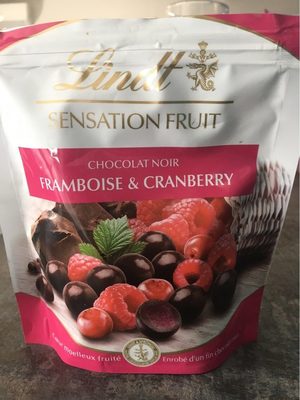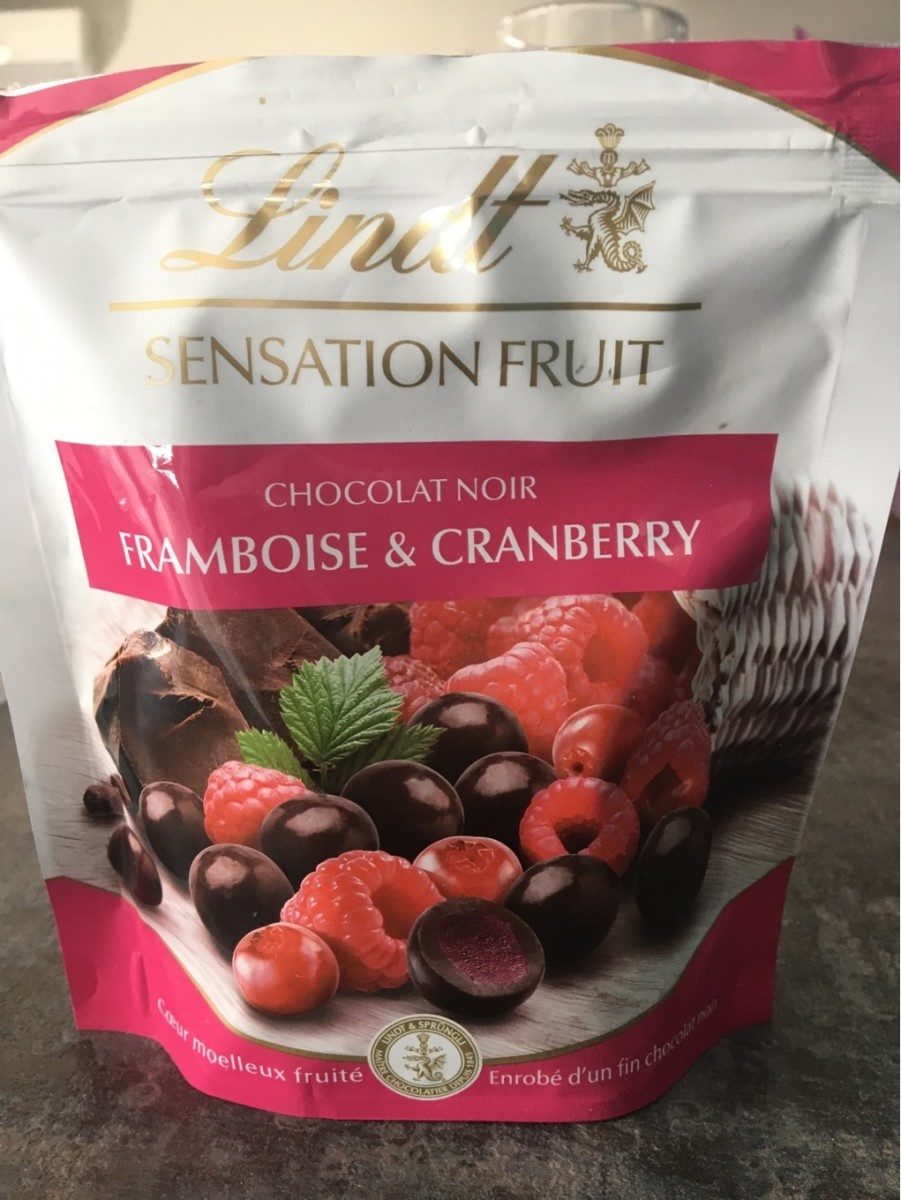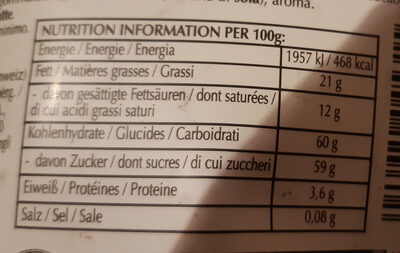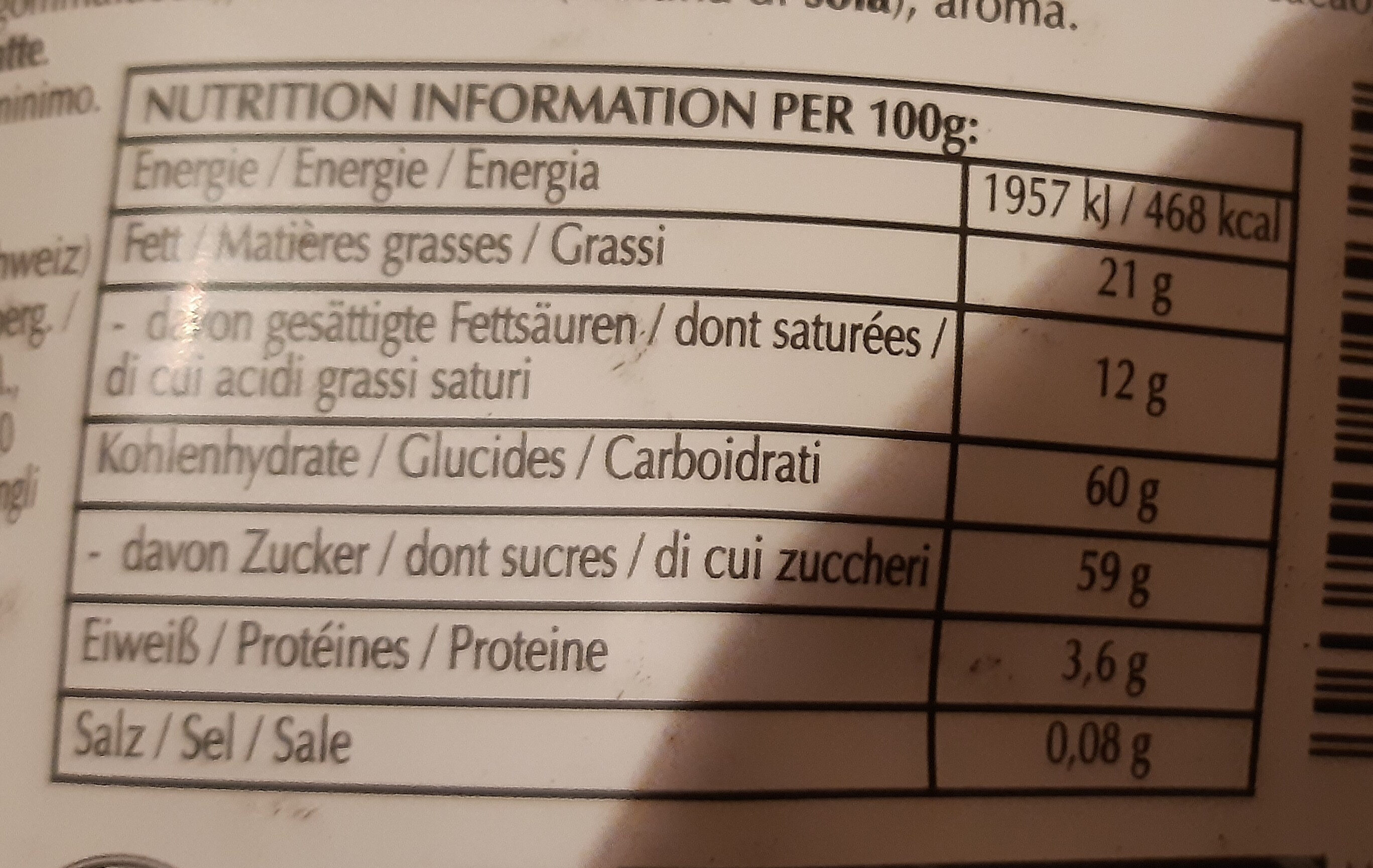Sensation Fruit Chocolat Noir Framboise & Cranberry - Lindt - 150 g
This product page is not complete. You can help to complete it by editing it and adding more data from the photos we have, or by taking more photos using the app for Android or iPhone/iPad. Thank you!
×
Barcode: 3046920045315 (EAN / EAN-13)
Common name: Bouchées de chocolat noir extra fin traditionnel fourré d'un coeur moelleux fruité 34%
Quantity: 150 g
Packaging: Plastic, Bag, Protective gas
Brands: Lindt
Categories: Snacks, Sweet snacks, Cocoa and its products, Confectioneries, Bars, Chocolate candies, Bonbons, Fruit confectioneries, Chocolate covered fruits, Bars-covered-with-chocolate
Labels, certifications, awards: Lindt & Sprüngli Cocoa Farming Program
Manufacturing or processing places: France
Stores: Carrefour, Franprix, Magasins U, Woolworths, Coop, M-Preis, Kmart
Countries where sold: Australia, France, Spain, Switzerland
Matching with your preferences
Environment
Packaging
Transportation
Report a problem
Data sources
Product added on by phoenix
Last edit of product page on by archanox.
Product page also edited by autorotate-bot, date-limite-app, eoptam, foodrepo, gildubs, inf, kiliweb, magasins-u, mike89, openfoodfacts-contributors, packbot, quechoisir, scanbot, scanparty-franprix-05-2016, sebleouf, thaialagata, torredibabele, yuka.U1k5ZURMd3NwOTBtcWNGdnhEamMvOTlvNFkrZ1lsTG5ldXNJSVE9PQ, yuka.UWFCYVNwNFpoT3N1bWNBdTlCWDYzczl2NlorU1RUK0pFTXNTSVE9PQ, yuka.Ull3OUYvd2hxZWdEd3ZjKytSV1AxZng0d3FEeEEwam9kYkVJSVE9PQ, yuka.V0xBYkRiZytyYWdqeDhVd29rN3J3STlxMlkrTUIxNmRCOWNYSWc9PQ, yuka.Vkw4eUVxTWtnOW9Zb3NZVG9RamU4UGxQM2J5Q1V6S1lKN01TSVE9PQ, yuka.WElvR0lyVXhpNlUzd3ZFUnhESDF3OGhud3FlRVIyM3NMOWNqSVE9PQ, yuka.YUlNYUc2RWkrLzlUd2NJNDh3bjg4L2NvNkx5blVWSzVKTG93SVE9PQ, yuka.YW9JcFN2NWFnZDhub01ZRHJ6T005OXhubXNXbFVHK2RJdFlCSVE9PQ, yuka.ZUlNTUVZc3NpUDA3bzhKZzRUekYzNElwNUpxcVJudXhDc2s5SUE9PQ, yuka.Zi9zc0RZTXhudmhhZzhjdTl6ei85OVZGM2NHNVhHanBlOVZLSUE9PQ.










